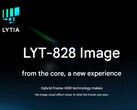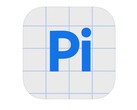The PNG file format was originally introduced in 1995 and has been a recommended file format by the World Wide Web Consortium (W3C) since October 1996. The W3C adopted the second version of the standard in November 2003. Since September 2021, a W3C working group has been developing the third version, which was officially released as a W3C standard on June 24, 2025.
Compared to JPEG, PNG has two major advantages. First, photos and graphics in PNG can be compressed losslessly, which results in better quality but also larger file sizes. Second, PNG stores the so-called alpha channel, allowing it to display transparent areas. Version 3 introduces a number of changes that make PNG significantly more attractive for modern use. Most notably, PNGs can now store EXIF data, similar to JPEGs, meaning metadata can now indicate which camera was used and where the picture was taken by including GPS coordinates.
Animated PNGs (also called APNGs) have existed for years and were originally developed by Mozilla. But with PNG Version 3, they are now officially part of the W3C standard and are therefore likely to be supported by far more software in the future. Anyhow, the probably most exciting new feature is HDR support. Thanks to cICP, HDR PNGs are only 16 bytes larger than SDR PNGs. With an embedded ICC profile, they would be up to 9MB larger.
Strong software support and plans for the future
PNG Version 3 was developed in collaboration with Adobe, Apple and Google, and is therefore already supported by numerous apps. This includes all Chromium-based browsers, Firefox, macOS, iOS, Adobe Photoshop and DaVinci Resolve. Since PNG is often used for subtitles and overlays in news broadcasts, these are also expected to be displayed in HDR soon.
The World Wide Web Consortium is already working on two further improvements for the PNG standard. First, lossless compression will be modernized in order to reduce the filze size of PNGs. Second, the compatibility of HDR images on SDR displays and vice versa will be further improved.



















